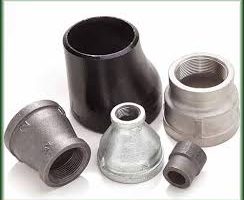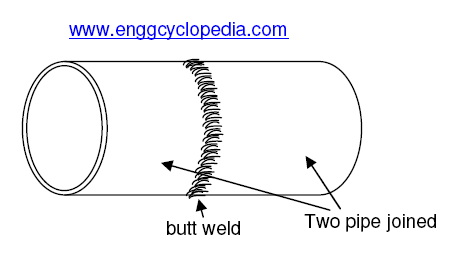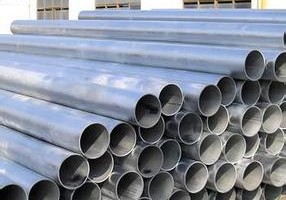Purpose of positive isolation
The primary objective of positive isolation is to provide a safe environment for performing maintenance, repair or replacement operations on process facilities.
Positive isolation while performing maintenance or repair activities on process facilities means that,
- All the hazardous energy sources must be identified
- All hazardous energies must be isolated at the source
- Residual energies must be eliminated.
Positive isolation can be provided to equipments or piping items for maintenance purpose using various arrangements depending on following factors,
- # rating of the piping
- Process fluid type - hydrocarbon, utility, toxic service, non-hazardous etc.
- Operational status of the system - shutdown and depressurized or still in service
Using Spectacle blind
Following schematics present a few possible arrangements for performing positive isolation.
 For a system which is shutdown, depressurized and hydrocarbon free this arrangement can be followed for providing positive isolation to individual devices within the depressurized system. This arrangement simply uses a removable piping spool and spectacle blind or blind spade to positively isolate the system after shutdown and depressurization.
For a system which is shutdown, depressurized and hydrocarbon free this arrangement can be followed for providing positive isolation to individual devices within the depressurized system. This arrangement simply uses a removable piping spool and spectacle blind or blind spade to positively isolate the system after shutdown and depressurization.
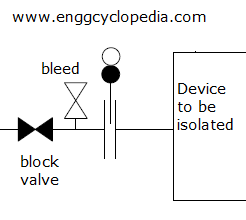 Block and bleed valve assembly
Block and bleed valve assembly
For a system which is still in service, some of the devices within the system need to be positively isolated sometimes for maintenance or repair. In such a case a block valve is needed to isolate the process side still in service from equipment requiring maintenance. A spectacle blind is used to further isolate toxic or hydrocarbon fluids from entering the maintenance side of the valve and a bleed valve is commonly used to drain/vent the fluids trapped between block valve and the blind. For lower # rating systems only a single block valve is used. A block and bleed valve assembly can be used instead of separately installing individual valves.
Double block and bleed
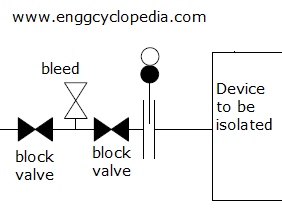 Systems still in service, which have either high pressure or toxic or high hydrocarbon containing service are referred to as systems with critical service. For such systems two block valves are required for additional isolation between operational process side and device requiring maintenance. A bleed is used to drain/vent the fluids trapped between the two block valves. A blind or a spade is used to provide additional positive isolation. Commonly a double block and bleed valve assembly is used for this purpose instead of separately installing individual valves.
Systems still in service, which have either high pressure or toxic or high hydrocarbon containing service are referred to as systems with critical service. For such systems two block valves are required for additional isolation between operational process side and device requiring maintenance. A bleed is used to drain/vent the fluids trapped between the two block valves. A blind or a spade is used to provide additional positive isolation. Commonly a double block and bleed valve assembly is used for this purpose instead of separately installing individual valves.
